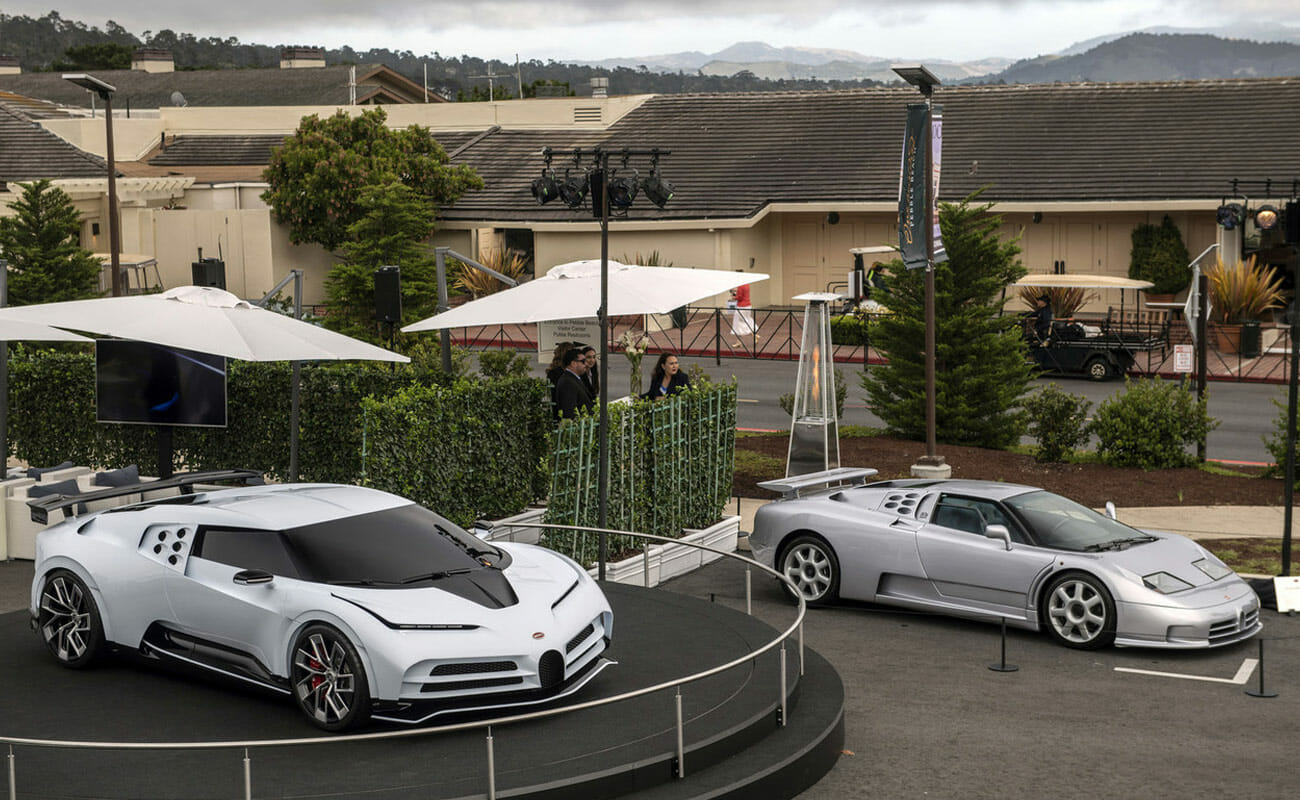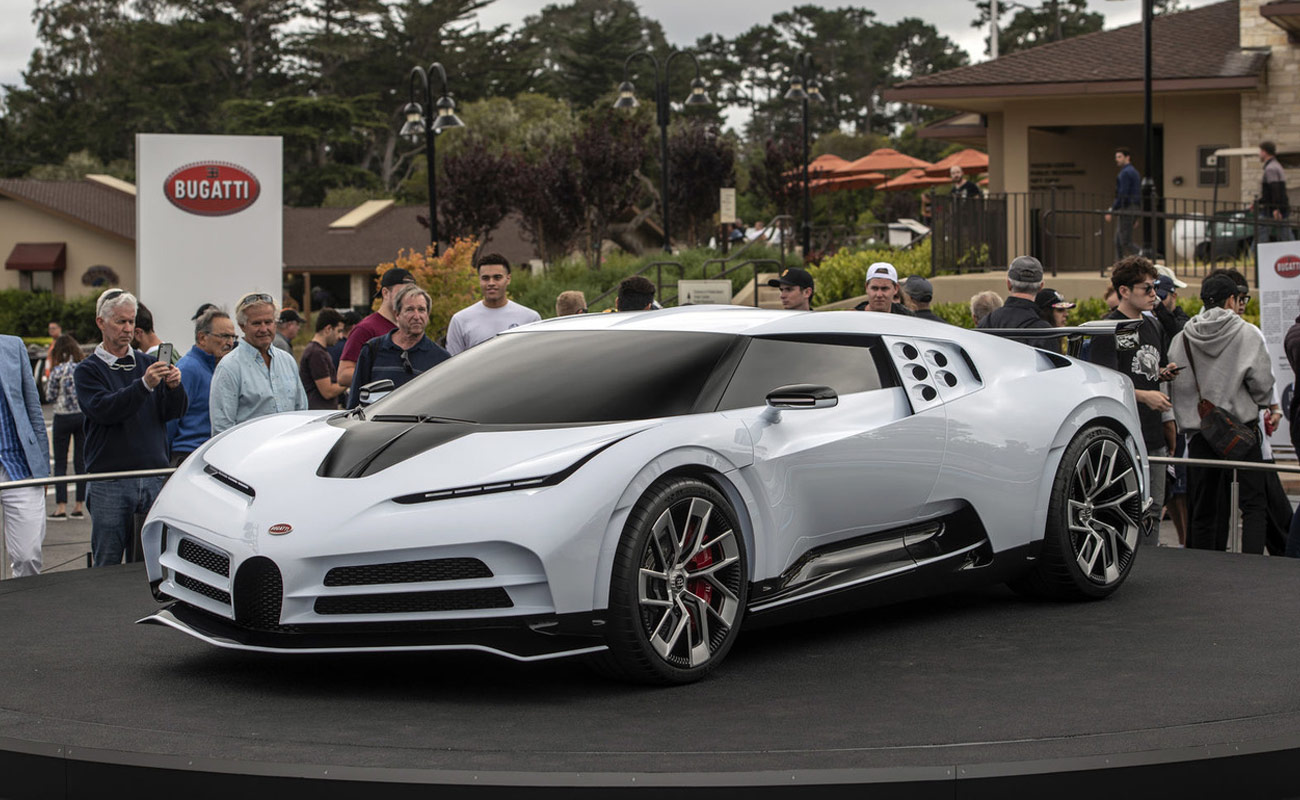If you’re the head of exterior design for, say, Ford, odds are good you see your work every day of your life — whether you’re in the office or not. If you’re the head of exterior design for Bugatti, however, you’re unlikely to run into an example of your penmanship parked beside you when you pop over to Wawa for a hangover hero on Sunday afternoon. As a result, Frank Heyl is unlikely to be randomly spurred to talk about his job — which could explain why he’s such an effusive interviewee. (Except when it comes to commenting on future product, at which point he sticks to his official line with a consistency that would make Robert Mueller jealous.)
Unlike some senior figures at automakers, when we ran into him at the Bugatti stand at the Pebble Beach Concours d’Elegance this year, we barely needed to ask a question to spur him on; Heyl simply began chatting away, dishing out facts and details about the new Centodieci limited-run supercar the brand unveiled there with the pride of a new parent.
It helped that Bugatti had hauled out a pristine copy of the Centodieci’s inspiration, the EB110 of the Nineties, for Heyl to riff off, parking it alongside the new speed machine. The decision to go with an homage to the groundbreaking-for-its-time EB110, says Heyl, was part of the company’s plans to celebrate its 110th birthday this year by looking to its past. Bugatti’s previous designs have often paid tribute to the brand’s better-known cars of the 1930s to varying degrees, from the subtle curves of the original Veyron to the nouveau-Thirties act of reverence called La Voiture Noire, a one-off revealed at this year’s Geneva Motor Show that, at $18.9 million, is the most expensive new car ever sold.
The Bugatti Centodieci alongside the EB110 at the Pebble Beach Concours d’Elegance. Photo by Bugatti.
But the Centodieci marks the first time the current Volkswagen Group-owned iteration of the esteemed carmaker has used design to acknowledge the company’s brief Italian resurrection by Romano Artioli in the late Eighties and early Nineties. That eight-year span saw the creation of just one car, the EB110 — but that quad-turbocharged car helped define the concept of the modern-day supercar, paving the way for the current iteration of the brand.
“We thought it was about time to do this,” he says.
Unlike, say, The Lion King, the Centodieci isn’t just a remake of a Nineties icon using 2019 tech. “We didn’t want to do a copy of [the EB110] with new technology,” Heyl says. Instead, the new car draws on the proportions — which Heyl says are the most important part of a design — to emulate the wedgy shape of the Italian-made French car on the German-owned French-made chassis shared with the Chiron.
It presented a few issues for Heyl and his team. The EB110’s primary designer, Giampaolo Benedini, is an architect by profession, hence the car’s straight lines; but those forms don’t pair well with Bugatti’s modern trademark of a dropping beltline, which Heyl refers to as “a very sovereign statement for a supercar.” In order to merge the two design languages, the design team wound up shrinking Bugatti’s trademark horseshoe grille and enlarging the tail to raise the rear end, enabling them to, in Heyl’s words, “shoot the lines through to the lower front.”
The Bugatti Centodieci. Photo by Bugatti.
That back end is home to one of Heyl’s favorite design details: the tail lamps, an eight-unit, 3D-printed cluster that stretches across the bootylicious tail. Mounted below them are eight 3D-printed titanium exhaust tips, the exit for the 1,578-horsepower W16’s waste gases. That, for the record, is 100 horses more than the Bugatti Divo, the handling-emphasizing Chiron variant upon which the Centodieci is based. Yet you’d never know the similarity between the two went beyond the bougie badge — even in spite of the mere six months the carmaker spent developing the car.
“We did it in record time,” Heyl says, citing the use of virtual reality goggles amongst the tools used to expedite the design process.
And yet, while it only took half a year to go from idea to Pebble Beach-going reality, all 10 examples scheduled to be built have already been spoken for. That’s not just because of the ravenous desire among the rich for whatever’s new and next, though; it’s also due to the way the company plans out its special models. Before Bugatti even gives a one-off or limited-run car the green light for production, they make sure they have handshake agreements with enough buyers to sell out. As Heyl puts it, “You just take the Divo list, call them up, say ‘This is what we’re doing, are you interested?’”
Admittedly, the Centodieci is still a little undercooked in one or two spots. The headlamp openings are correct, Heyl says, all the way down to the vents there to evacuate pressure from the front wheel wells — but the lights seen here aren’t the production ones. (The final versions will slide into the existing slot just fine, he says.)
But the company has plenty of time to firm up the details. Heyl says the car won’t be on the streets until 2022, until after the previously-announced limited-run cars have made their way through the production process.
“We are very well aware that we should not flood the market,” he says. “This will be the last for a while now.”



